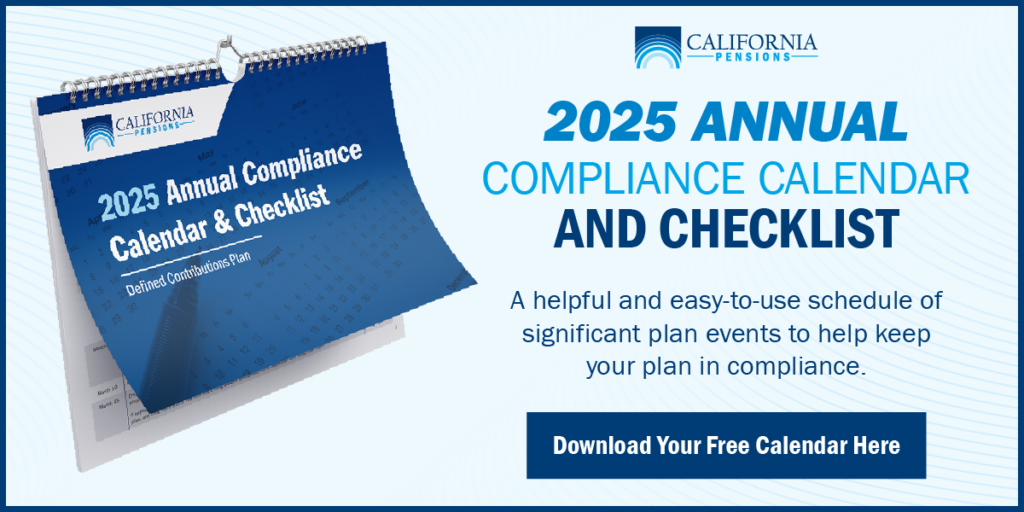As a follow-up to the 2019 SECURE Act, the “Securing a Strong Retirement Act of 2021” or Secure Act 2.0, may soon shift the retirement planning landscape. Passed unanimously by the Ways and Means Committee of the House of Representatives, the proposed legislation is now advancing to the full house for consideration.
What is a Cash Balance Plan? Check out our Guide
The purpose of the Secure Act 2.0 is to address the retirement savings crisis and pandemic-related economic struggles facing many Americans. Over the course of 2020, the contributions to retirement plans decreased and, in some cases, completely halted. With the proposed legislation, lawmakers hope to make it easier for individuals to save for retirement at an earlier age without stress, while also adding provisions for those close to retirement age.
Proposed Changes Under Secure Act 2.0
Expansion of Automatic Enrollment
Under the Secure Act 2.0, employers who offer 401(k), 403(b) and SIMPLE IRA plans after 2021 will be required to automatically enroll all newly eligible employees at a 3% deduction level that increases 1% annually until it reaches 10%. Existing plans do not have to change anything and employees do have the option to opt out.
Contribute After-Tax to Roth Accounts
If passed, the Secure Act 2.0 will allow participants to make after-tax contributions on a ROTH basis. They will also be required to make catch-up contributions in 401(a), 403(b), and 457(b) plans as well as elect matching contributions to a Roth account instead of pre-tax. This means that participants will no longer be allowed to make their catch-up contributions tax-deferred.
Raise Catch-up Contribution Limits
The contribution limits have increased for workers 50 and older. Under current legislation, at age 50 participants can contribute the following:
- 401(k) and 403(b) plans: additional $6500
- SIMPLE plans: additional $3000
- IRAs: additional $1000
Starting in 2023, at age 50, individuals can contribute:
- 401(k) and 403(b): additional $10,000
- SIMPLE Plans: additional $5000 per year for ages 62,63 and 64
- The IRA catch-up contribution limit stays the same at $1000 but would index the amount by inflation.
Offer Assistance and Matching Contributions to Student Loan Borrowers
Student loan debt can be difficult to overcome. Under Secure Act 2.0, individuals who are making payments on their student loans but not currently contributing to their retirement savings can still receive employer matches. This proposal, would allow companies to match student loan payments up to a certain percentage of the employee’s salary and deposit it into their retirement savings account. This would allow individuals to both conquer their debt and invest in their future of retirement.
Delay the Required Minimum Distribution Age
In the original SECURE Act, retirees could delay their RMDs from age 70 ½ to 72. The new change would require retirees to begin drawing from their tax-deferred retirement accounts at 73 in 2022, 74 in 2029 and at age 75 in 2032. However, participants with less than $100,000 in retirement savings will be exempt from RMD rules completely.
Increase the Saver’s Credit
The saver’s credit or retirement savings contributions credit is a tax credit for low- to medium-income households who currently contribute to their retirement savings plans. Currently, the tax credit has numerous rules and is very limited in its qualifications. However, the new Act aims to make it more inclusive by raising the rate of the credit to 50% of what you contribute, regardless of income level, and will increase the value of the credit from $1000 to $1500.
Lower Costs for Employers
Providing a retirement plan for employees can be costly, especially for smaller businesses. The Secure Act 2.0 aims to increase tax credits for small businesses from 50% to 100%. This will allow defined contribution plans to receive higher credit and cover administrative costs for setting up the plan as well.
Secure 2.0 aims to open up Pooled Employer Plan and other group plan options to 403(b)s similar to what was allowed for 401(k) plans under SECURE.
Looking to the Future of Retirement With Secure Act 2.0
As the Secure Act 2.0 continues to move through the legislative process, there are possibilities that aspects of the bill will be modified. While nothing has been signed into law, there are opportunities to plan for the future in the situation that it does pass. When it comes to retirement savings and planning for the future, California Pensions is here to provide assistance and expertise every step of the way. If you have questions about your retirement plan–contact us today!





